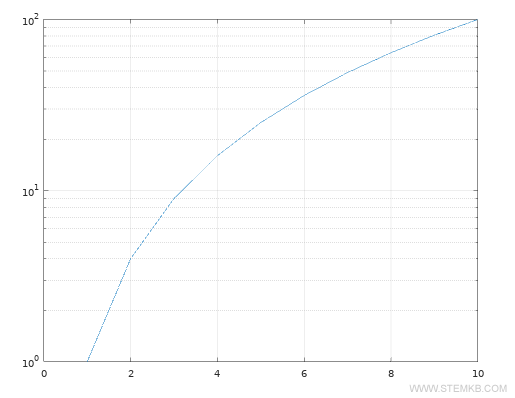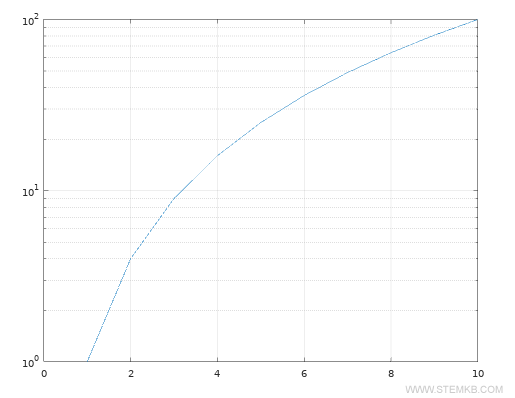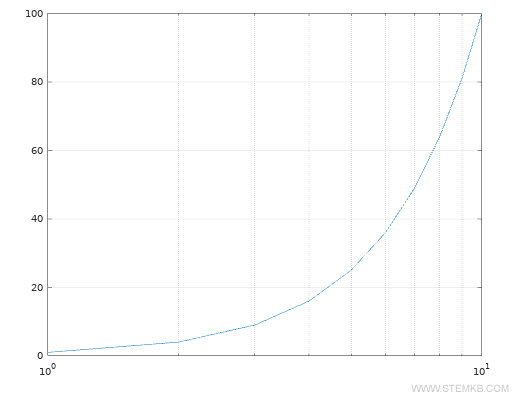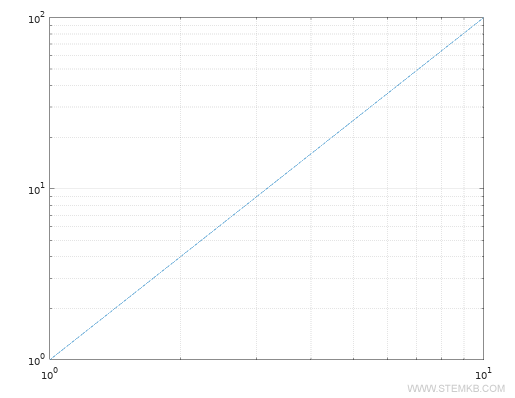
Logarithmic Scale Diagrams in Octave
In this lesson, I will explain how to create a logarithmic scale diagram in Octave.
A logarithmic scale diagram is a graph in which values are represented on a logarithmic scale on the x-axis and/or y-axis. It is useful for representing data that grows exponentially.

To create a logarithmic scale diagram in Octave, you can follow these steps.
Create an array with the values of the variable x from 1 to 10
>> x=0:1:10;
Create an array with the values of y.
In this example, the array is composed of the squares of x:
>> y=x.^2
Plot the function on a normal Cartesian diagram with the function plot(x,y)
>> plot(x,y)
It is an exponential function.

To represent the function on a diagram with a logarithmic scale on the y-axis, use the function semilogy().
>> semilogy(x,y)
Now, the y-axis is on a logarithmic scale in the diagram.

To display gridlines on the logarithmic scale diagram, type grid on.
>> grid on
This makes the logarithmic scale easier to see.

How to apply a logarithmic scale to the x-axis?
If you want to display the diagram on a logarithmic scale on the x-axis, use the function semilogx()
>> semilogx(x,y)
In this way, only the x-axis is on a logarithmic scale.

How to create a graph with a logarithmic scale on both axes?
To represent a logarithmic diagram on both axes, use the function loglog()
>> loglog(x,y)
Now, both axes are on a logarithmic scale in the graph.

If this lesson on Octave by Nigiara is useful, continue to follow us.

